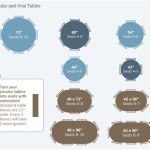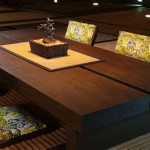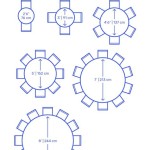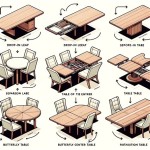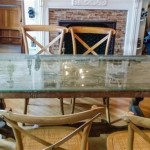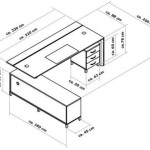What Is The Standard Size of a Snooker Table?
The dimensions of a snooker table are a defining characteristic of the game, directly impacting gameplay, skill requirements, and the overall strategic approach. Understanding the standard size is crucial for players, enthusiasts, and those considering purchasing a table. The regulations governing snooker stipulate precise measurements, ensuring consistency across professional tournaments and amateur settings. This article will detail the standard size of a snooker table, exploring its defining features and providing context for its significance.
The standard full-size snooker table is the benchmark against which all other sizes are compared. It’s the table used in professional competitions governed by recognized snooker organizations. These regulations dictate not only the overall dimensions but also aspects like the height of the cushions, the size of the pockets, and even the material used in the cloth covering the playing surface. This standardization is fundamental for maintaining a consistent and fair playing field, regardless of location or venue.
The Official Dimensions: Length and Width
The standard full-size snooker table measures 12 feet long by 6 feet wide. These dimensions are measured from the inside edges of the cushions. Specifically, the playing area, the rectangular space inside the cushions, must be 11 feet, 8 ½ inches (356.9 cm) long and 5 feet, 10 inches (177.8 cm) wide. These measurements are essential for compliance with official snooker rules and are a critical factor in the game's strategic complexities.
The significant difference between the overall outer dimensions (12 x 6 feet) and the playing area dimensions (11' 8 ½" x 5' 10") is due to the presence of the cushions, which surround the playing surface. The cushions are integral parts of the table's construction and are not included in the official playing area measurements. The cushions play a vital role in the game, allowing players to carom the cue ball off them for strategic positioning and potting balls. Therefore, when specifying table dimensions for construction or purchase, it's crucial to distinguish between the overall table size and the precise playing area dimensions.
The level of precision required when manufacturing a regulation snooker table is extremely high. Even minor deviations from these standardized dimensions can affect the trajectory of the balls, the speed of the game, and the overall playing experience. This is why professional-grade snooker tables are manufactured to exacting standards, using precision tools and skilled craftsmanship.
The Height and Pocket Size Standards
Beyond the length and width, the height of the snooker table and the size of the pockets are also strictly regulated. These factors further contribute to the consistency and uniformity of the game. The height of the table, measured from the floor to the top of the cushions, must be between 33 ½ inches (85.1 cm) and 34 ½ inches (87.6 cm). This range ensures comfortable play for players of varying heights.
The pockets are another critical aspect governed by specific standards. The dimensions of the pockets, specifically their width, influence the difficulty of the game. Narrower pockets naturally demand greater accuracy and precision when potting balls. The corner pockets of a standard snooker table should measure between 3 ½ inches and 3 ⅝ inches at the fall (the opening where the ball drops into the net). The middle pockets, also known as side pockets, are slightly wider, typically measuring between 3 ⅝ inches and 3 ⅞ inches at the fall. These precise measurements are implemented to create a challenging and balanced playing environment.
The shape of the pocket openings, beyond just the width at the fall, is also a significant factor. Conical pockets, which narrow gradually towards the back, prevent balls from rebounding back onto the table after being potted. The "shelf" of the pocket, the area just inside the opening, is also carefully designed to guide the ball smoothly into the net. These subtle design elements contribute to the overall playing characteristics of a professional snooker table.
Material Specifications and Other Considerations
While the physical dimensions are paramount, the materials used in constructing a snooker table significantly influence its performance and lifespan. The slate bed, for example, is a critical component, providing a perfectly flat and stable playing surface. The slate must be of sufficient thickness (typically between 1 ½ inches and 2 inches) to prevent warping or sagging over time.
The cloth covering the slate bed is another vital material. High-quality snooker cloth, typically made from tightly woven wool, provides a smooth and consistent surface for the balls to roll on. The nap of the cloth, the direction in which the fibers lie, affects the speed and direction of the balls, adding another layer of complexity to the game. Professional-grade snooker cloth is carefully maintained and regularly brushed to ensure optimal playing conditions.
The composition of the cushions also plays a vital role. The cushions must be made from a resilient rubber compound that provides consistent rebound properties. The shape and angle of the cushions are carefully designed to ensure that the balls rebound accurately and predictably. Over time, cushions can lose their elasticity, affecting the game's playability. Regular maintenance and replacement of the cushions are essential for preserving the quality of a snooker table.
Furthermore, the frame and legs of the snooker table must be sturdy and well-constructed to provide a stable and level playing surface. The frame is typically made from hardwood or engineered wood, and the legs must be adjustable to ensure that the table is perfectly level, even on uneven floors. The overall weight and stability of the table are critical factors in ensuring consistent and accurate gameplay.
Finally, the lighting above the table is also a vital aspect of the playing environment. Proper lighting is essential for providing clear visibility of the balls and the table's surface. The lighting should be evenly distributed and free from glare to minimize distractions and fatigue for the players. Professional snooker tournaments often utilize specialized lighting systems that are carefully designed to optimize visibility and minimize shadows.
In summary, the dimensions of a standard snooker table are a carefully defined set of parameters that dictate the playing experience. From the overall length and width to the height, pocket size, and material specifications, every detail contributes to the game's complexity, skill requirements, and strategic possibilities. Deviation from these standards can significantly alter the game's character, impacting the trajectory of the balls, the speed of play, and the overall level of challenge. Understanding the standard size of a snooker table is essential for anyone involved in the game, whether as a player, enthusiast, or manufacturer.

What Size Room Will I Need For My Snooker Table Liberty

Factory Promotion 12ft Professional Standard Snooker Tables And Table Made In China Com

Supreme Pool Table Room Size Information

Account Suspended

What Size Room Will I Need For My Snooker Table Liberty

What Is 12ft Standard Size Solid Wood Slate Snooker Table

Classic Full Size Snooker Table Union Billiards

Room Size Pooltables Com

Snooker Table Room Size Guide Plan View Detail

Pool Table Room Size Calculator

